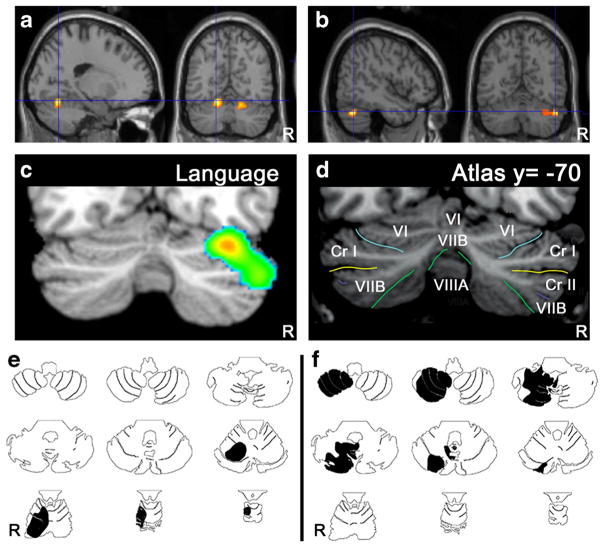Fig. 6.
Topographic arrangement in cerebellum of speech versus language representation. Functional MRI localizes articulation (a) to medial parts of lobule VI bilaterally, whereas verb generation (b) activates lateral regions of lobule VI and crus I on the right. In a meta-analysis of functional imaging studies [156] higher-level language tasks engage the right lateral posterior cerebellum, lobules VI and crus I (c) according to the lobule identification in (d; [184]). Case studies of cerebellar stroke patients reveal topography for articulation vs. higher-level language tasks. A patient with stroke in the territory of the right superior cerebellar artery (e, black shading) involving lobules I–VI was dysarthric; whereas a patient with stroke in the territory of the right posterior inferior cerebellar artery (f, black shading) involving lobules VII–IX was not dysarthric but performed poorly on the Boston Naming Test [185] (from Stoodley and Schmahmann in ref. [11])

